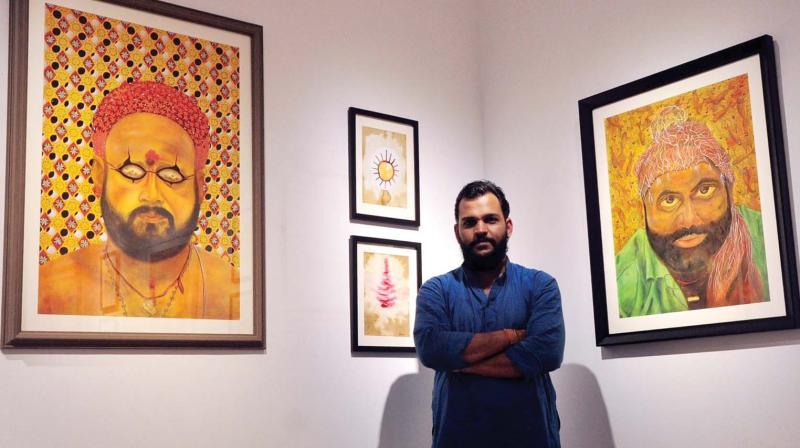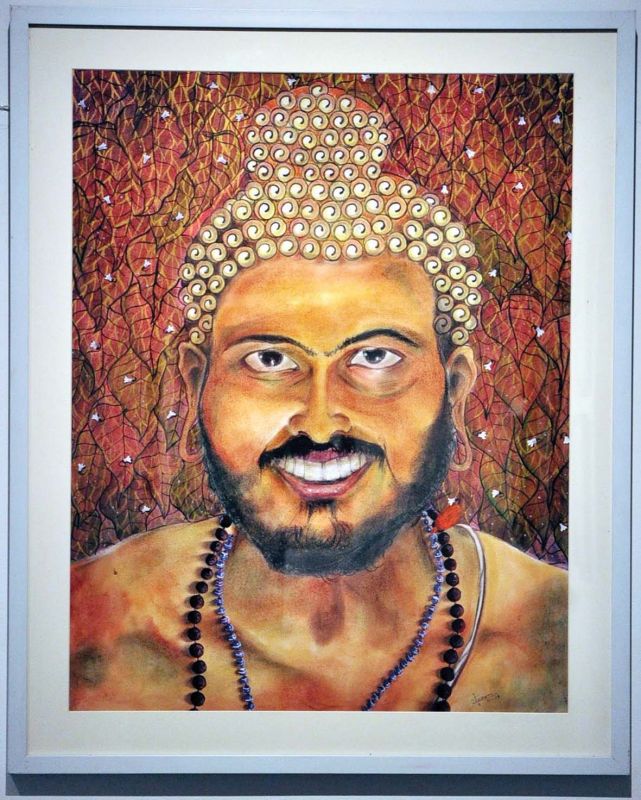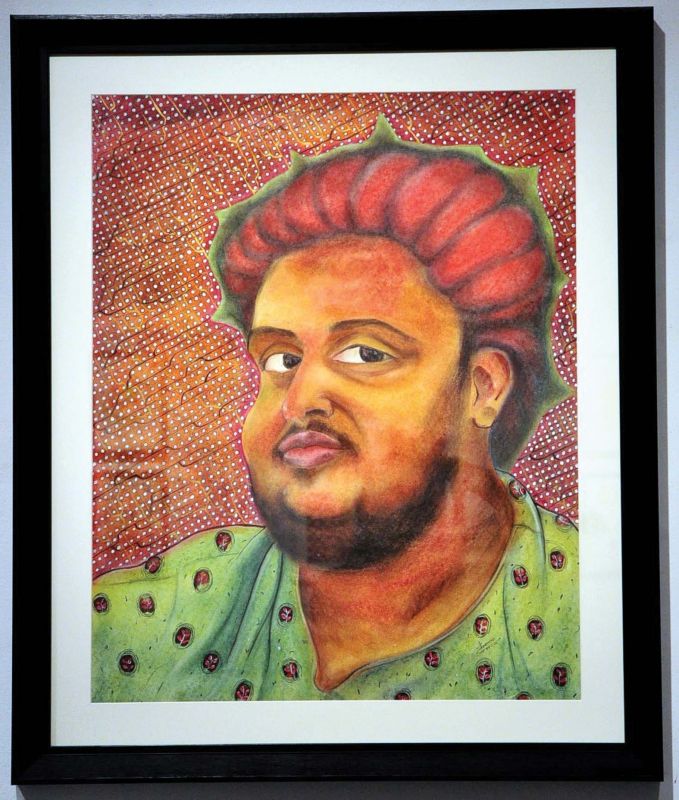Seeing the unseen
According to artist Girish Kalleli, art should help viewers to see beyond the obvious.

Art is sometimes seeing beyond the surface and symbolic elements bring greater meaning to it. The most conclusive certification of man’s intelligence is his ability to recreate in symbolic form the world in which he lives. An artist is using that ability to symbolically form an idea or another insight of a subject that is beyond the surface. Artist Girish Kalleli’s philosophy of art goes that way.
“Any form of art should see beyond the obvious. It does not mean to confuse an onlooker by giving so much to think, but to represent an idea differently and help them understand that there is more than the mere painting in front of them. For that, sometimes you have to break stereotypical or conventional way of painting, too,” says Girish, who has been in the field for more than 18 years. The works displayed at his exhibition Life Traits that concluded recently lured viewers. “My goal was to capture the unseen and the invisible and make things visible to the naked eye. The art springs up from the captivating nature of the subject and its subtle individualistic innuendos that are intimate and often surpassed in common sense and sight.”

At an exhibition, Girish says, of all the 28 paintings featuring artworks of varied genres, 10 portrait type figurative compositions were the nub of the event. The show rendered a totally different visual experience. He affirms that an artist is driven by his surroundings and therefore has an influence on him. “Keen observation and exquisite impressions form the foundation of the life-portraiture of the works. The beauty of my surroundings and the people around me may be the main reason why I excelled in arts even from my childhood,” he says. “for the exhibition, I selected some people who I see in my village on daily basis and tried to personify them beyond the external appearance and resemblance principles of the genre and to capture the inner realities of mind and internal complexities of human existence. One of the resemblances that I tried to bring in on those subjects was a state of enlightenment. The inner essence of the human subject is identified and termed as the stat or essence of enlistment or Buddha Tatvam. I believe everyone has a phase in life whenhe/she attains enlightenment. Here, using some of the faces that I see every day, I tried to carve out that enlightenment in them.”

He views his model, who is a human subject from multiple perspectives or viewing vantages and renders an impressionistic articulation of the subject in his own uniquely creative style. The mode he uses is realistic though there are some abreact aspects to it too. When quizzed about his favourite medium, Girish says he uses dry pastels commonly, but it changes according to the subject and the way he wants to carry out a work.
Girish, who hails from a small village near Muvattupuzha, holds on to the tradition and culture as a tantric practitioner and an agriculturist. “I practise tantric poojas and they influence me while painting. For example, the way I choose some colours and tones have been the results of my tantric practices and the state they took me to. I also love to travel a lot, especially after painting for a few days. Although I never wander around looking for subjects during my journeys, they do influence me while I'm with my palette and brush. Travelling brings out the real one in us and we break out and go beyond the comfort zone of our friends and family and cozy luxuries. It helps to calm my mind and enlighten me.”
An alumnus of RLV College, Tripunithura, Girish is also researching with a fellowship from the Cultural Ministry of the Government of India. He lives in Kalamboor with his wife and two kids.
